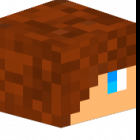- Sky
- Blueberry
- Slate
- Blackcurrant
- Watermelon
- Strawberry
- Orange
- Banana
- Apple
- Emerald
- Chocolate
- Charcoal
-
Content Count
120 -
Joined
-
Last visited
-
Days Won
35
Fingercomp last won the day on April 16 2023
Fingercomp had the most liked content!
About Fingercomp
-
Rank
Leading Member
Profile Information
-
Gender
Male
Contact Methods
-
GitHub
Fingercomp
-
IRC
fingercomp
Recent Profile Visitors
3841 profile views
-
 AetherNet reacted to a post in a topic:
IRC library
AetherNet reacted to a post in a topic:
IRC library
-
 Fingercomp reacted to a post in a topic:
MagicaVoxel .vox converter for print3d
Fingercomp reacted to a post in a topic:
MagicaVoxel .vox converter for print3d
-
 Fingercomp reacted to a post in a topic:
Platformer game on OpenComputers
Fingercomp reacted to a post in a topic:
Platformer game on OpenComputers
-
 Fingercomp reacted to a post in a topic:
uncpio - A simple CPIO extraction utility
Fingercomp reacted to a post in a topic:
uncpio - A simple CPIO extraction utility
-
Unfortunately here, they only share the name and the purpose. For one, the program you've read about isn't even written in Lua, so you can't really expect it to run on OC. The one included in OpenOS cannot, in fact, download directories recursively. Nor do any of the fancy things the other program can. When searching for what an OpenOS program does, documentation for utilities included in a Linux distribution probably won't be useful. Instead, type man programname in the OpenOS shell, or look into the program's source code (edit /bin/programname).
-
 BAT54 reacted to an answer to a question:
Can't change max screen size in the config
BAT54 reacted to an answer to a question:
Can't change max screen size in the config
-
I had this problem quite a long time ago, and I think I fixed it by also updating the settings client-side to match those on the server.
-
 Totoro reacted to a post in a topic:
IRC library
Totoro reacted to a post in a topic:
IRC library
-
There was no IRC library for OpenComputers, so I've made one. Here's a demo bot that uses it: local com = require("component") local event = require("event") local thread = require("thread") local gpu = com.gpu local irc = require("irc") local events = irc.events local env = setmetatable({ irc = irc, events = events, }, {__index = _G}) local client = irc.builder() :connection { host = "irc.esper.net:6667", throttling = { maxDelay = 2, maxThroughput = 5, }, } :auth { nickname = "oc-finger-irc", username = "fingercomp", realname = "OpenComput
-
 Fingercomp reacted to a post in a topic:
Stem - easy internet bridge
Fingercomp reacted to a post in a topic:
Stem - easy internet bridge
-
 Fingercomp reacted to a post in a topic:
GPS on microcontrollers
Fingercomp reacted to a post in a topic:
GPS on microcontrollers
-
TL;DR: set the resolution to 159×28. Displays automatically scale the content to fit the screen's inner area. If you decrease the resolution height, the display area will occupy more horizontal space. I'll assume that your screen is 8×3. The aspect ratio of the screen's inner area is (2 × (8×16 - 4.5)) : (3×16 - 4.5) = 494×87. The "- 4.5" terms are the screen borders, and the width is doubled because the cell width is half its height. If you set the resolution proportional to this ratio, it will fill the whole screen. Of course, you can't do this, as the maximum resolution is 160×50.
-
 Fingercomp reacted to a question:
Preemptive multitasking and sysyield timeouts
Fingercomp reacted to a question:
Preemptive multitasking and sysyield timeouts
-
 Fingercomp reacted to a post in a topic:
Bundle - allows to use multiple filesystems as a single one
Fingercomp reacted to a post in a topic:
Bundle - allows to use multiple filesystems as a single one
-
Pressing the button that is placed on the screen turns the screen on/off. Make sure the button is not adjacent to the screen. Also, you should use rs.getInput in yor problem. rs.getOutput returns the strength of the redstone signal emitted by the computer's redstone card.
-
 krakodeel reacted to an answer to a question:
Drone usage?
krakodeel reacted to an answer to a question:
Drone usage?
-
 Mystery reacted to an answer to a question:
Drone usage?
Mystery reacted to an answer to a question:
Drone usage?
-
 payonel reacted to an answer to a question:
Drone usage?
payonel reacted to an answer to a question:
Drone usage?
-
Of course there is. Assembling a drone with a leash upgrade produces a drone that can transport cows, horses, sheeps, and pigs. Like this: Or... like this: Besides, drones are entities. They move in straight lines; they don't get stuck in the fence and can actually enter a house through a door. They move pretty fast — about 6 blocks a second (robots are at least 2 times slower). Drone's movement is asynchronous, so the machine can execute some other code in the middle of the flight. Drones can fly above the block height limit. The screenshot above was made while enjoying th
- 1 reply
-
- internet card
- linked card
-
(and 1 more)
Tagged with:
-
 ZefTheFox reacted to a post in a topic:
Guide to the Sound Card
ZefTheFox reacted to a post in a topic:
Guide to the Sound Card
-
 Fingercomp reacted to a post in a topic:
[MC1.12.2][OC1.7] OpenPython, micropython available on OpenComputers
Fingercomp reacted to a post in a topic:
[MC1.12.2][OC1.7] OpenPython, micropython available on OpenComputers
-
It's a bit unclear for me what kind of problem you have. Is print also called twice per supposedly one sent modem message? Or is it only the doHarvestRoutine call that's repeated? If it's the former case (the print line is also run twice), it means your sent messages are somehow duplicated. First thing to check for is whether you have any relays nearby. These blocks LOVE to mess up with network packets. If you use them, I advice you to remove them and use linked cards or a network that checks for duplicates. If you don't, it's very likely that the sender program has a bug that causes it t
-
 Fingercomp reacted to a post in a topic:
Nadeshicodec - 320x200 OC video encoder
Fingercomp reacted to a post in a topic:
Nadeshicodec - 320x200 OC video encoder
-
 Fingercomp reacted to a post in a topic:
tacti OS window pased windows 7 expired
Fingercomp reacted to a post in a topic:
tacti OS window pased windows 7 expired
-
The last chapter mentions briefly the biggest problems that make sound reconstructed from the audio data sound bad, and I'm going to try to explain them. 1. The program is quite simple. It's merely a proof of concept. It doesn't use modulation or non-sine waveforms. 2. Most sounds are complex. Most sounds I hear are far from being purely sinusoidal. Perhaps it's different for you, or for someone else who happens to read this post. :) White noise is vastly different from a flute, and the flute isn't the same as a guitar. Each instrument has a unique timbre, and even a single
-

binary read and write, how does it work exactly?
Fingercomp replied to Ta©ti Tac0Z's question in Programming
A byte is an octet of bits, which can store 2⁸ = 256 possible values. To represent a character as a number, we need an encoding system. ASCII is one of them, and it assigns first 128 values to control characters, digits, English letters and punctuation. But people also use different languages, which need additional characters to be represented. Latin-1, for example, uses the remaining 128 values to define a few more characters from Latin-based scripts. Even with that, the character coverage was low: Chinese has several thousand different characters, for instance. Therefore, that was a need for -
This behaviour is strange and indicates there's a bug somewhere. Since the double buffering library is used by MineOS, it would have much more chance of being noticed, so it's more likely there's some problem in your code. Could you show the code you run, please?
-
Yeah, basically. The buffer is a singleton. In other words, there's only a single buffer instance in the memory, which is kept there even if programs that required the library exited. An implication of this fact is that buffer may be non-empty when you start your program; therefore, before you use the buffer, you need to do a buffer.clear() followed by a forceful render: buffer.drawChanges(true). It's been a long time since I've used that library, though. Things might have changed. Considering there aren't proper releases and commit descriptions, it's rather difficult to navigate throu
-
OC sets significant limits the GPU, which make it much harder to do more advanced graphics. You can optimize the calls at the cost of high RAM usage — storing data in a buffer and only drawing the cells that changed since the last buffer flush. It isn't really an easy thing to implement yourself, so you might want to use a buffering library someone else made — here's one that definitely works, for example. I was also making one, but it's not yet ready. OpenComputers has a font.hex file, which is the font that's used to render characters on the screen. Since OC 1.6, asie's funscii font
-
 ben_mkiv reacted to an answer to a question:
make opencomputers processors faster
ben_mkiv reacted to an answer to a question:
make opencomputers processors faster
-
Yeah, there is a way to make it faster. In fact, way faster. One of the things that makes it slow is... gpu.setBackground. It's quite expensive in terms of perfomance (tier 3 GPUs consume 1/128 of the call budget when this method is called). Fortunately, your program only involves 4 colors, so it can be easily optimized. Actually, there are two ways to do it. A somewhat naive way would be to process all cells of one color first, then process all cells of another color, etc. That would solve the issue with gpu.setBackground, but there's another thing to worry about. The gpu.set method isn'
-
 Izaya reacted to an answer to a question:
make opencomputers processors faster
Izaya reacted to an answer to a question:
make opencomputers processors faster
-
 viluon reacted to an answer to a question:
make opencomputers processors faster
viluon reacted to an answer to a question:
make opencomputers processors faster
-
Please calm down. There are some component methods that block the computer for a tick when called, yes. Such methods usually interact with the world. For example, a transposer allows to transfer items between invetories by calling the transferItem method, which takes a tick to execute (so you get up to 20 stacks/second). On the other hand, there are a lot of direct methods, which can be called several times per tick. For example, the GPU's methods are direct. And the processor (as well as RAM) determines how many direct calls are allowed per tick. I think T2 T3 setup allows you to ca
-
Oh, right... I forgot about that, sorry. Replace socket:close() with response:close().




